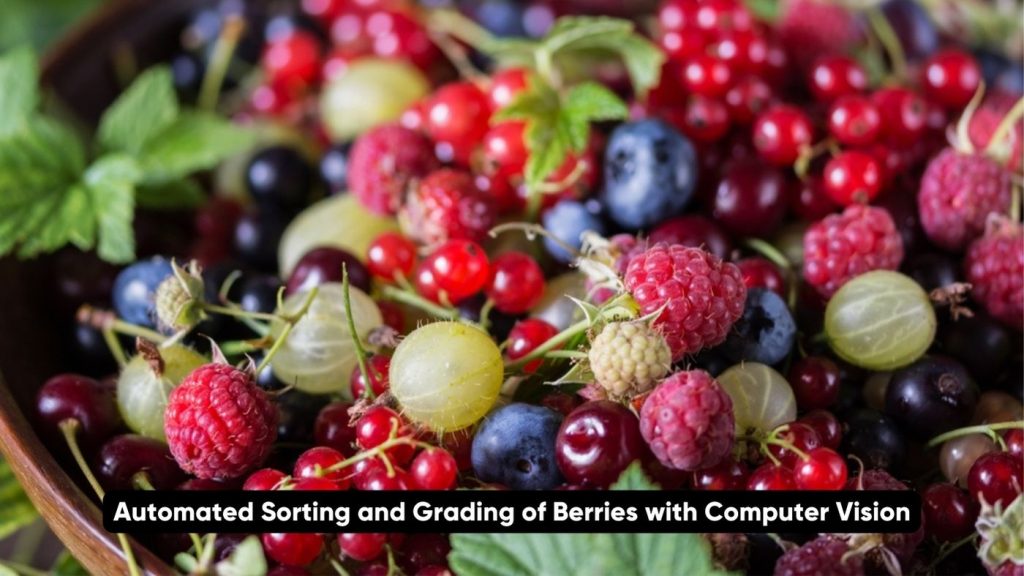Automated Sorting and Grading of Berries with Computer Vision: Revolutionizing Agricultural Efficiency
Background
Modern agriculture is witnessing a transformative wave driven by technological advancements. Among these innovations, the integration of AI-powered computer vision systems for the automated sorting and grading of berries stands out as a groundbreaking solution.

Significance
With the berry industry expanding to meet consumer demands, there is an increasing need for efficient sorting and grading methods. This not only ensures the supply of high-quality berries but also addresses the challenges posed by traditional labor-intensive methods.
The Need for Automation in Berry Sorting and Grading
Berry Industry Overview
A comprehensive understanding of the berry industry sets the stage for recognizing the importance of automating sorting and grading processes. Analyzing market trends and consumer preferences provides insights into the specific requirements that automated systems must meet.
Challenges in Traditional Sorting Methods
Examining the limitations of traditional methods highlights the necessity for automation. Labor intensity, high costs, susceptibility to human error, and inefficiencies in large-scale operations create a compelling case for the adoption of advanced technologies.
Understanding AI-Powered Computer Vision
Fundamentals of Computer Vision
An exploration of the fundamental concepts behind computer vision, including image processing, recognition, and machine learning integration, lays the groundwork for understanding how AI can be effectively applied to agriculture.
AI in Agriculture
The broader applications of AI in agriculture, particularly its role in precision farming and crop monitoring, provide context for its specific use in berry sorting and grading.
Components of Automated Berry Sorting Systems
Hardware
Detailed insights into the hardware components, such as high-resolution cameras, conveyor belts, and sensor technologies, shed light on the physical infrastructure necessary for an efficient sorting system.
Software
Examining the software side of automated systems involves understanding the machine learning algorithms, deep learning models, and the intricate data processing and analysis that enable accurate berry sorting.
The Workflow of AI-Powered Berry Sorting
Image Acquisition
The crucial initial step involves real-time capturing of berry images, exploring the importance of multiple-angle imaging to ensure comprehensive data collection for precise sorting.
Data Processing
A closer look at the pre-processing steps, noise reduction techniques, and the intricacies of feature extraction and pattern recognition in preparing data for the sorting algorithms.
Decision-Making
Detailed insights into the classification and sorting algorithms, along with the grading criteria and parameters that dictate the decision-making process in an automated berry sorting system.
Advantages of AI in Berry Sorting and Grading
Precision and Accuracy
An in-depth exploration of how AI eliminates human error and ensures consistent quality standards, making it a pivotal factor in the adoption of automated systems.
Increased Efficiency
Examining how AI facilitates high-speed sorting and optimizes large-scale operations, contributing to a substantial increase in overall efficiency in berry processing.
Cost Savings
A detailed analysis of the reduction in labor costs and minimized wastage as direct financial benefits resulting from the implementation of AI-powered berry sorting systems.
Case Studies and Success Stories
Implementations in Commercial Farms
Examining real-world implementations and their impact on yields and profitability, providing tangible evidence of the positive outcomes derived from automated berry sorting.
Testimonials from Agricultural Experts
Gathering perspectives from industry experts on the transformative impact of AI on berry farming practices, emphasizing improvements in overall crop management.
Challenges and Future Developments
Technical Challenges
An exploration of the technical hurdles that AI-powered systems may face, including adaptation to different berry varieties and the challenges posed by environmental variability.
Ethical and Societal Considerations
Delving into the potential ethical implications and societal considerations arising from the widespread adoption of automated systems, including their impact on employment in agriculture and the need for responsible AI implementation.
Future Trends and Innovations
An examination of the anticipated future trends, including the integration of AI with IoT technologies and advancements in machine learning models, providing insights into the evolving landscape of automated berry sorting.
Conclusion
Recapitulation of Key Findings
Summarizing the key findings to reinforce the transformative impact of AI on berry sorting and grading.
Looking Ahead
A forward-looking perspective on the anticipated growth in AI adoption, potential collaborations, and partnerships shaping the future of the agricultural tech industry.






